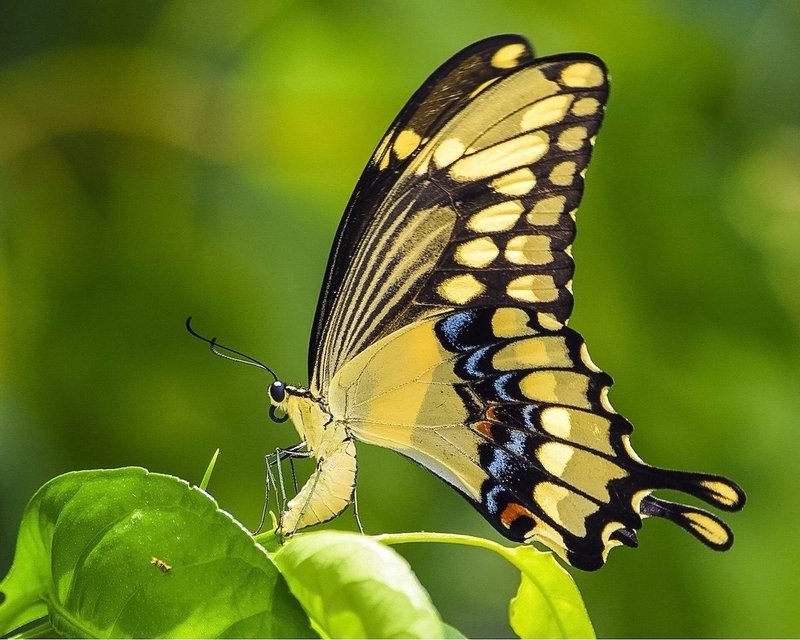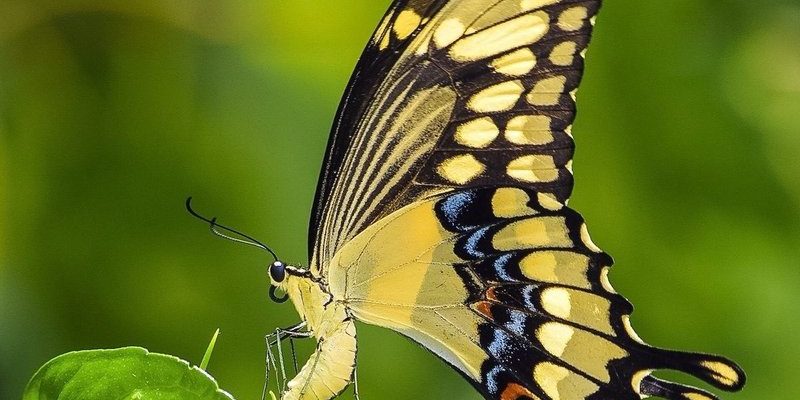
When I first started learning about swallowtail butterflies, I thought they were all similar, just different shades of yellow and black. But as I delved deeper, I realized how varied and fascinating they truly are. There’s a whole world of myths to bust, from their diet and lifespan to their migratory habits. So, grab a cup of coffee, and let’s clear up some of these common misconceptions together.
Myth 1: All Swallowtail Butterflies Are Yellow and Black
You might think of swallowtail butterflies and picture those bright yellow and black patterns. However, here’s the thing: not all swallowtail butterflies wear those classic colors. There are over 550 species of swallowtails worldwide, and they can sport a surprising variety of colors and patterns!
For example, the Appalachian tiger swallowtail can have a range of shades, including blue and even orange. Other species, like the Polygonia, show off stunning hues of rust and brown. This colorful diversity is a reminder that nature loves to mix things up. So, the next time you spot a swallowtail, don’t just assume it fits into a neat little box!
Myth 2: Swallowtail Butterflies Only Eat Nectar
It’s easy to think that butterflies are all about sipping nectar from flowers, but swallowtails are a bit more adventurous. While they do love nectar, they also have a varied diet that includes tree sap, rotting fruit, and even animal dung! Yes, you heard that right.
Their appetite for rotting fruit can actually help them obtain important nutrients. This behavior can be beneficial, especially when nectar sources are scarce. It might sound a bit gross, but honestly, it’s just another fascinating aspect of their survival strategy. Nature is full of surprises, isn’t it?
Myth 3: Swallowtails Only Live a Few Weeks
You might be surprised to learn that many assume swallowtail butterflies only live for a short time, like a few weeks. While it’s true that many butterflies have a brief adult lifespan, swallowtails can live longer than you might think. Some species can live up to a full year!
The key to their longevity lies in their life cycle. The caterpillar stage can last for several months, and when they become adults, they often find ways to hibernate or enter a state called diapause during harsh weather. This means they can effectively time their emergence based on favorable conditions, allowing them to thrive longer than expected.
Myth 4: Swallowtail Butterflies Are Terrible at Migration
When we think about migrating animals, we might picture birds flying south for the winter. It’s common to assume butterflies stick to specific areas, but here’s the truth: some swallowtail species are impressive travelers. They can cover significant distances when needed.
Take the Eastern tiger swallowtail as an example. Though they typically stay within a specific region, they can migrate to find more suitable habitats when their current environment becomes too harsh. This adaptability is part of what makes swallowtails so resilient. If you ever see one fluttering by, just know it might have traveled quite a distance to get there!
Myth 5: All Swallowtail Caterpillars Are Green
The idea that all swallowtail caterpillars are green is another common misconception. While many might be a vibrant green, that’s not the full story. These little guys come in a range of colors and patterns, including browns and even some that mimic the look of bird droppings, which helps camouflage them from predators.
Take, for instance, the larva of the spicebush swallowtail. They can appear almost black with yellow markings, making them look quite striking against the leaves they inhabit. This variety is not just for show; it’s a clever way of avoiding being eaten. Just as we change outfits for different occasions, these caterpillars adapt their appearance based on their environment.
Myth 6: Swallowtail Butterflies Are Not Important for the Ecosystem
You might be wondering how butterflies contribute to nature. It’s easy to overlook the role of swallowtail butterflies, but they’re actually vital pollinators. While they may not be as celebrated as honeybees, these butterflies help in pollinating many flowers and plants, contributing to the health of ecosystems.
Their role doesn’t stop there. Swallowtail caterpillars serve as food for various birds and other wildlife. This means that they’re not just beautiful additions to our gardens—they’re essential players in keeping the food chain balanced. So, the next time you spot a swallowtail, remember that it’s doing its part to support the environment!
Final Thoughts on Swallowtail Butterflies
Swallowtail butterflies are like little gems of nature, full of charm and mystery. The myths that surround them can often cloud our understanding, but by debunking these misconceptions, we can appreciate them even more. From their vibrant colors to their important role in ecosystems, every aspect of swallowtails is a reminder of how intricate and beautiful nature can be.
So, keep an eye out the next time you’re outdoors. You might just spot one of these amazing butterflies. Who knows, you might even teach your friends a thing or two about the swallowtail butterfly myths you’ve just learned!

